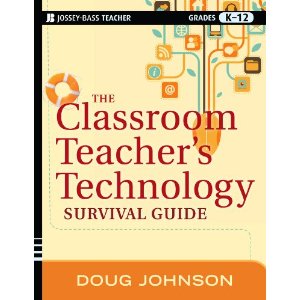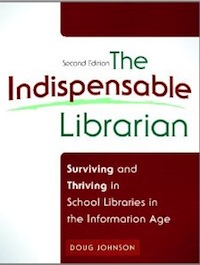Changing Face of School Research
The Changing Face of School Research
Head for the Edge, March 1977
Consider these research assignments:
Quite a bit, actually. The tasks of the information process, regardless of the source of the information, remain pretty much the same. Students still need to formulate good questions and identify the needed information. They still need a method of gathering, recording, organizing and analyzing the information whether those tasks are accomplished with paper and pencil, video camera, database or e-mail. More than has ever been the case with secondary information sources, the primary data needs to be critically evaluated. (One of our local student felt she had hit the jackpot when she found a woman on the Internet who was willing to share her adventures as a fighter pilot in Vietnam. She later discovered through other research that there were no female fighter pilots involved in that conflict.)
As “performance-based” assessment becomes a standard means of evaluating student work, the communication of the researched findings becomes increasingly important. Students need guidance in deciding the medium and preparing the display of their findings, whether through thoughtfully crafted charts and graphs, a multi-media presentation, computerized slide shows, or even web pages.
For many teachers, who probably were not asked to do primary source research until they were in graduate school - if ever, the use of original research and the use of primary sources may be as new to them as it is to their students. Our job as information specialists may well be as much teaching the teachers good information literacy skills, as it is helping the students.
So, will the reference books sit dusty on the shelves? The card catalog’s monitor burn out and not be reported for months? Will our carefully made lessons on using the CD-ROM periodical guide molder in a drawer? No more state reports or posters of African animal facts or “social problem” term papers? I hope not. As excited as I am about constructivist, hands-on, experiential teaching and learning, I also firmly believe real education demands that students learn both process and content.
And information technology (and technologists) will help with both.
Head for the Edge, March 1977
Consider these research assignments:
- High school students trace the history of a buildings on their town’s main street.
- A middle school class researches and recommends a location for the new city landfill.
- Elementary students collect holiday customs celebrated by students from around the world using electronic mail and the Internet.
- Increasingly, research focuses on topics of local significance. Whether researching a building, person, ethnic group or custom, the emphasis is on things in the student’s immediate geographic area, if not in their own household. Even when the topic is of national or international scope: pollution, the global economy, the Gulf War, technology, or health issues, teachers are asking students to assess the impact of policies and events on their own families and communities.
- As a result, researchers are being asked to use primary rather than secondary resources. Local history is scanty in most school media centers, and when it does exist, like in back issues of the local newspaper, it’s not often indexed. The county courthouse, a local university, original surveys, government statistics (published on the Internet), and the memories of local “experts” are examples of primary information sources in increasingly common use.
- Each of the examples above are purposely designed to be meaningful to the student researcher. The issues of recycling and pollution become relevant (and exciting) when the new landfill might be located next door to one’s own house or favorite recreation area. The genuine voices of another culture’s students of a similar age speak louder than any text or reference book.
Quite a bit, actually. The tasks of the information process, regardless of the source of the information, remain pretty much the same. Students still need to formulate good questions and identify the needed information. They still need a method of gathering, recording, organizing and analyzing the information whether those tasks are accomplished with paper and pencil, video camera, database or e-mail. More than has ever been the case with secondary information sources, the primary data needs to be critically evaluated. (One of our local student felt she had hit the jackpot when she found a woman on the Internet who was willing to share her adventures as a fighter pilot in Vietnam. She later discovered through other research that there were no female fighter pilots involved in that conflict.)
As “performance-based” assessment becomes a standard means of evaluating student work, the communication of the researched findings becomes increasingly important. Students need guidance in deciding the medium and preparing the display of their findings, whether through thoughtfully crafted charts and graphs, a multi-media presentation, computerized slide shows, or even web pages.
For many teachers, who probably were not asked to do primary source research until they were in graduate school - if ever, the use of original research and the use of primary sources may be as new to them as it is to their students. Our job as information specialists may well be as much teaching the teachers good information literacy skills, as it is helping the students.
So, will the reference books sit dusty on the shelves? The card catalog’s monitor burn out and not be reported for months? Will our carefully made lessons on using the CD-ROM periodical guide molder in a drawer? No more state reports or posters of African animal facts or “social problem” term papers? I hope not. As excited as I am about constructivist, hands-on, experiential teaching and learning, I also firmly believe real education demands that students learn both process and content.
And information technology (and technologists) will help with both.
Posted on Friday, July 6, 2007 at 12:49PM
by
 Doug Johnson
in Head for the Edge column
|
Doug Johnson
in Head for the Edge column
|
 Post a Comment
Post a Comment





Reader Comments